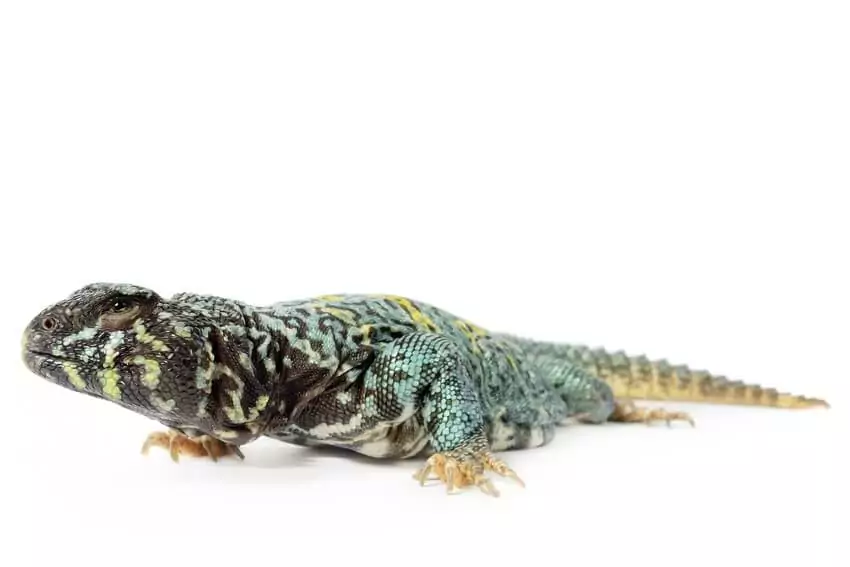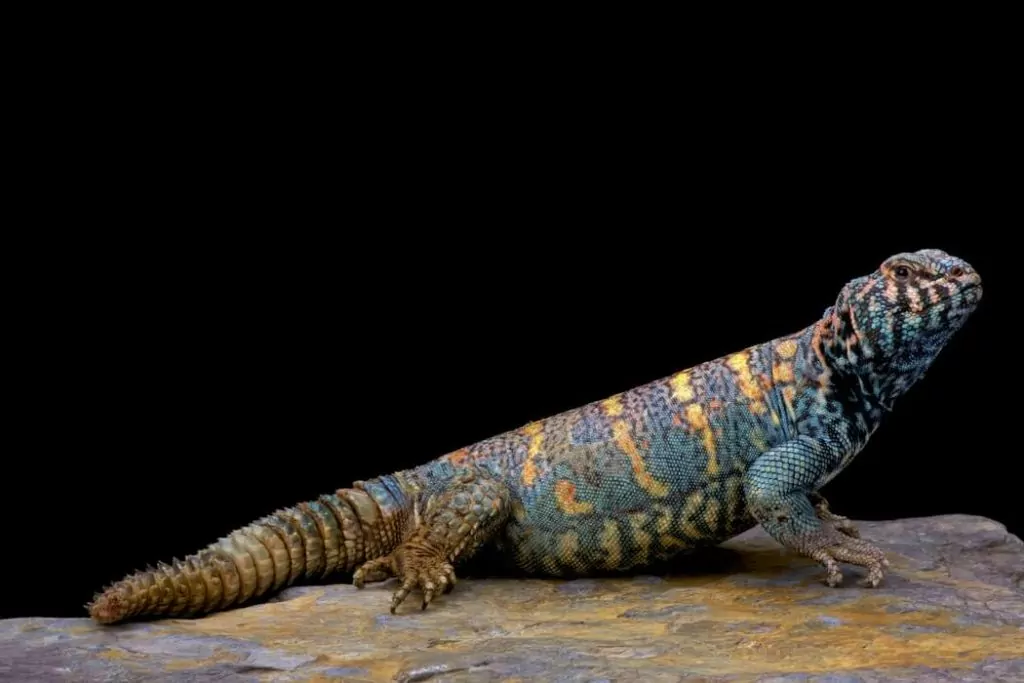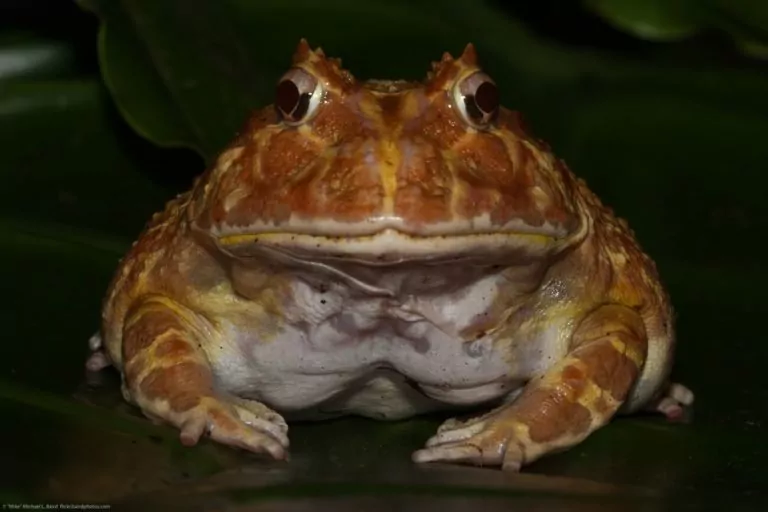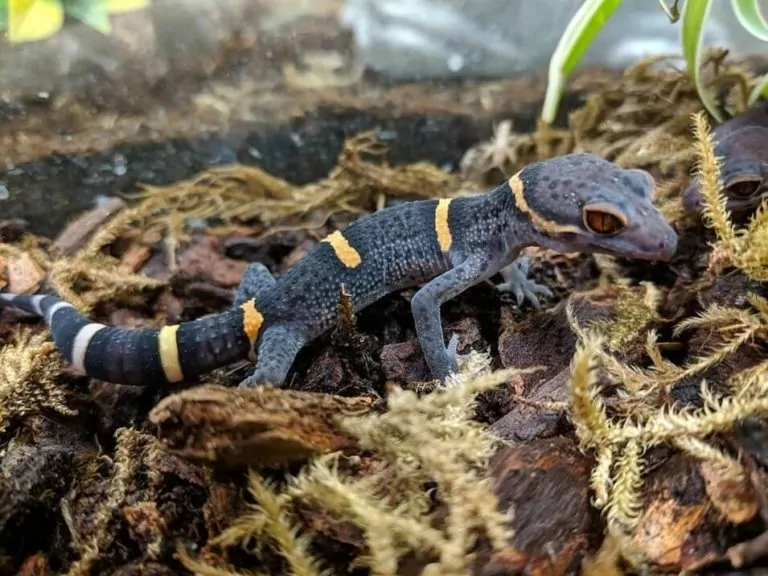The ornate uromastyx is an uncommon pet reptile that many people forget about. But trust us, there’s a lot to like about these lizards!
This guide will teach you everything you need to know about ornate uromastyx care. By the time you’re done reading it you’ll be ready for ownership!
Table of Contents
Species Summary
The ornate uromastyx (U. ornata) is one of approximately 20 or so uromastyx species. This lizard belongs to the old-world lizard family Agamidae. It’s a rare species that you don’t see very often in the pet trade.
These beautiful lizards hail from the deserts of Egypt, Israel, and Saudi Arabia. Typically, they live in dried bodies of water between cliffs. There, they spend their days burrowing and hiding.
This Uromastyx was first introduced to the pet trade in the early 1990s. Back then, not much was known about them. As a result, many wild-caught specimens ended up dying in captivity due to incorrect information about their needs.
Today, we know a lot more about the ornate uromastyx. It continues to be an enigma in many regards, but reptile enthusiasts have come a long way in understanding what this species needs to live long and healthy lives.
Appearance & Colors
There’s no denying that the ornate uromastyx is one of the most interesting-looking species in the reptile kingdom! It has a relatively stocky build and sports a fat tail that’s covered in spikes. The tail is a multi-faceted beauty, providing a form of protection against predators while also acting as a tool for burrowing.
Like many other desert-dwelling lizards, the ornate uromastyx has clawed feet with five distinct fingers on each.

The interesting part of this lizard is the head. It’s not pointed or triangular like most lizards. Instead, it’s rounded and somewhat stubby (some even say it looks like a turtle). Excess skin around the neck and back of the head only exacerbates its round shape even more.
As for color, the ornate uromastyx is the complete opposite of what you’d expect, given its natural habitat! The lizard has shades of green, blue, and yellow adorning its back. It stands out quite a bit against the neutral tones of the desert.
Expert Tip: Males and females both feature yellow stripes. However, males tend to be brighter overall. Females are usually more neutral and have shades of pink rather than green. It makes the two very easy to identify!
Lifespan
The life expectancy of a captive ornate uromastyx is a lot better than it used to be! Where it stands today, the average lifespan for this lizard in captivity is about 12 to 20 years. The exact lifespan of wild specimens is still unknown.
As always, there are no guarantees here. However, the level of care you provide will have a significant impact on this lizard’s longevity. Attentive care and high-quality living conditions are necessary if you want them to reach the upper end of this potential lifespan range.
Average Size
The ornate uromastyx lizard is a medium-sized reptile. The size of a lull-grown adult is usually somewhere between 12 to 15 inches long from the nose to the tip of the tail.
They aren’t the biggest lizards in the herpetology world, making them pretty accessible to those who don’t have a ton of space. Their size is primarily determined by genetics and the quality of care you provide from a young age.
Ornate Uromastyx Care
If you’re thinking about ornate uromastyx care caring, you have a big job ahead of you!
Fortunately the information we have about this species today is rather extensive. It’s a far cry from what owners had available to them in decades past!
However, despite the surge in knowledge these reptiles can still be a handful. They have some distinct care requirements you must fulfill to ensure that they stay healthy in captivity.
Enclosure Size
The first thing you need to do is find the right enclosure.
Generally, an enclosure size of 40-gallon tank will be just fine for ornate uromastyx. But if you want to go one step further, go for a three-sided enclosure.
At the very minimum, the enclosure should measure about 48 inches long by 24 inches wide. The height can be about 24 inches as well.
Expert Tip: Ornate uromastyx tends to do better when three sides of the enclosure are opaque and closed off. A glass front is fine for natural lighting and observation.
What To Put In Their Habitat
As always, the best tip we can give when decorating your lizard’s tank is to keep things as natural as possible. In other words, model the curated environment after their natural habitat. In this case, that means aiming for a desert-like environment!
Establishing the proper habitat is one of the most important aspects of ornate uromastyx care. Paying attention to the details and spending extra time at this stage will result in a healthier and happier pet lizard!

Start with a layer of a safe substrate material. The jury is still out on what’s best. You can use shredded newspaper, reptile carpet, or bare tile. The choice is yours.
Some like to use play sand or millet to facilitate digging. However, you have to be careful about ingestion and compaction. For this reason, avoid calcium sand or crushed walnuts.
Next, add some rocks and dry branches. You don’t have to get super crazy with the climbing surfaces. Younger lizards are keener on climbing than adults. As long as you have a couple of networking branches for basking, you should be good to go!
Don’t forget about the hides as well! You can use wooden boxes, faux rock caves, or even simple PVC pipes. We recommend adding three hides in the enclosure to give the lizard a chance to get the right amount of heat.
Temperature & Lighting
Speaking of heat, let’s talk about temperature.
The ornate uromastyx is a desert-dwelling lizard. Because of this, temperatures are going to be much higher than what you might see for other species!
The goal for temperature and lighting is to create a gradient. On one side, you should have your basking lamp. Place it outside of the enclosure to prevent burns. But, focus the light on a spot where your lizard can relax and soak.
Here are the numbers to keep in mind:
- The basking spot should be between 120 and 130 degrees Fahrenheit
- On the opposite end, temperatures should be a cool 80 to 90 degrees
The ornate uromastyx requires a standard day and night cycle. Keep the lights on a timer and use only red lamps if you need to observe the lizard at night. Temperatures can drop to around 70 degrees at night. If it falls below that, use ceramic heaters to keep things stable.
Expert Tip: Full-spectrum UVB lights are a must for proper calcium synthesis. Position the light to shine across as much of the habitat as possible. Set it on a timer and make sure that it shines around 12 hours throughout the day.
Humidity
This might go against everything you know about caring for popular reptiles, but you don’t need much humidity with the ornate uromastyx.
Remember that this species helms from the deserts of the Middle East. It’s not a tropical lizard that thrives in ultra humid environments. That means you should keep the humidity levels as low as possible.
Do not spritz the enclosure, and don’t add any live plants that could inadvertently raise the humidity levels on you. Excess moisture in the air could lead to a variety of different health concerns.
Water
These colorful lizards have adapted to the rough environments they are native to, where drinking water is not readily available. As a result, you don’t need to place a water dish in the enclosure.
Some owners like to provide a small dish for younger lizards, but once they reach adulthood it may be best to remove it. The dish will only raise the humidity levels (which you don’t want).
Ornate uromastyx lizards get the hydration they need to stay alive from the foods they eat. That’s why diet is such an important part of ornate uromastyx care (more on that in the section below).
Ornate Uromastyx Food & Diet
One of the biggest misconceptions about ornate uromastyx in the early 90s related to what they ate. Contrary to what many thought, these lizards are herbivores through and through!
You do not need to provide high-protein foods. In fact, doing so may cause health problems. These lizards thrive on fresh greens, flowers, vegetables, and beans.
Expert Tip: As a general rule of thumb, anything you can provide to a tortoise is acceptable for the ornate uromastyx.
Try to mix things up frequently to ensure that your lizard gets as many vitamins and minerals as possible. Also, aim for fresh foods for the sake of hydration.
You can feed adults up to four times a week. Some owners like to provide a monthly supplement of calcium powder. However, we recommend erring on the side of caution. If you have a good diet and a working UVB lamp, the supplement is unnecessary.
Prioritize your ornate uromastyx’s diet and do your best to keep things fresh, healthy, and varied. Here are some good foods you can throw into the mix:
- Green peas
- Birdseed
- Mustard greens
- Turnip greens
- Endive
- Microgreens
- Bok Choy
- Marigold
- Rose petals
- Pansies
- Arugula
- Parsley
- Garlic chives
- Basil
- Geraniums
- Pumpkin flower
- Spring mix
- Dandelion greens
- Escarole
- Sage
Potential Health Issues
Ornate uromastyx lizards are prone to all the usual reptile health problems.
Respiratory infections and fungal problems are pretty common. Like any other lizard, these issues appear when humidity and temperature levels are all wrong. For the ornate uromastyx, mucus buildup and respiratory inflammation usually occur when there’s too much humidity.
Expert Tip: Keep a hygrometer in the enclosure and take care of any moisture that may get into the air. Address it quickly, as this lizard does not tolerate humid air very well.
Bacterial infections, parasites, and mites can occur as well. Usually, these issues come into the environment through food, decor, or tank mates. Make sure to quarantine any new addition to the habitat.
Also, stay on top of messes! Spot clean every day and perform a complete sanitization every month or so. Doing so will keep bacteria to a minimum, which may help to decrease the chances of infection.
Behavior & Temperament
The ornate uromastyx is one of the laziest in the uromastyx family of lizards. They live very relaxed lifestyles, preferring to lounge around and bask rather than explore.
You might see more activity in younger juveniles. They like to climb and be a little more active. However, that behavior slows down by the time they reach maturity.
It is possible to keep male and female pairs together with a large enough enclosure and careful planning. But the truth is that these lizards would like things a lot more if they were alone.
In the wild, this species is pretty much solitary. The only exception is around breeding time. If you don’t plan on breeding your lizard, it’ll do just fine on its own.
Handling Them
This lizard can get fairly comfortable with handling. However, it can take several months to get to that point.
When you first bring an ornate uromastyx home, you must give it time to acclimate. For wild-caught lizards, this can take up to six months!
Expert Tip: During this time, you should not handle the lizard except for when it’s necessary. Stress can make the lizard avoid meals and eventually get sick. Giving it time to adjust will make the transition much easier.
After it acclimates to its new surroundings, you can start to coax it into your hand. Support its body and limit handling to only a few minutes in the beginning. Over time, you can start building up your trust.
Eventually, your ornate uromastyx will get more comfortable with your presence and the touch of your hand.
But as always, it prefers to be alone. To keep your pet as comfortable as possible you can just enjoy its beauty from the other side of the glass!
Wrapping Up
Ornate uromastyx care requires some commitment knowledge, but it’s definitely not impossible. In fact, we would consider this to be a lizard of “moderate” difficulty.
If you have any questions about these reptiles that we didn’t include in the care sheet, we would be more than happy to help you out. Just send us a message and we’ll respond as soon as we can!


